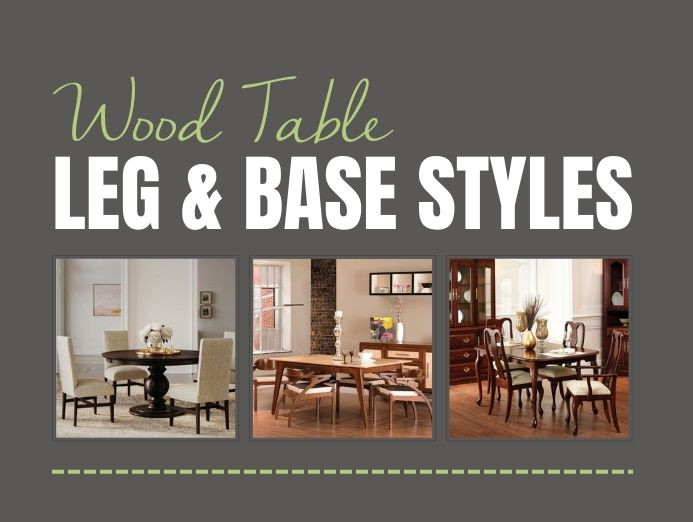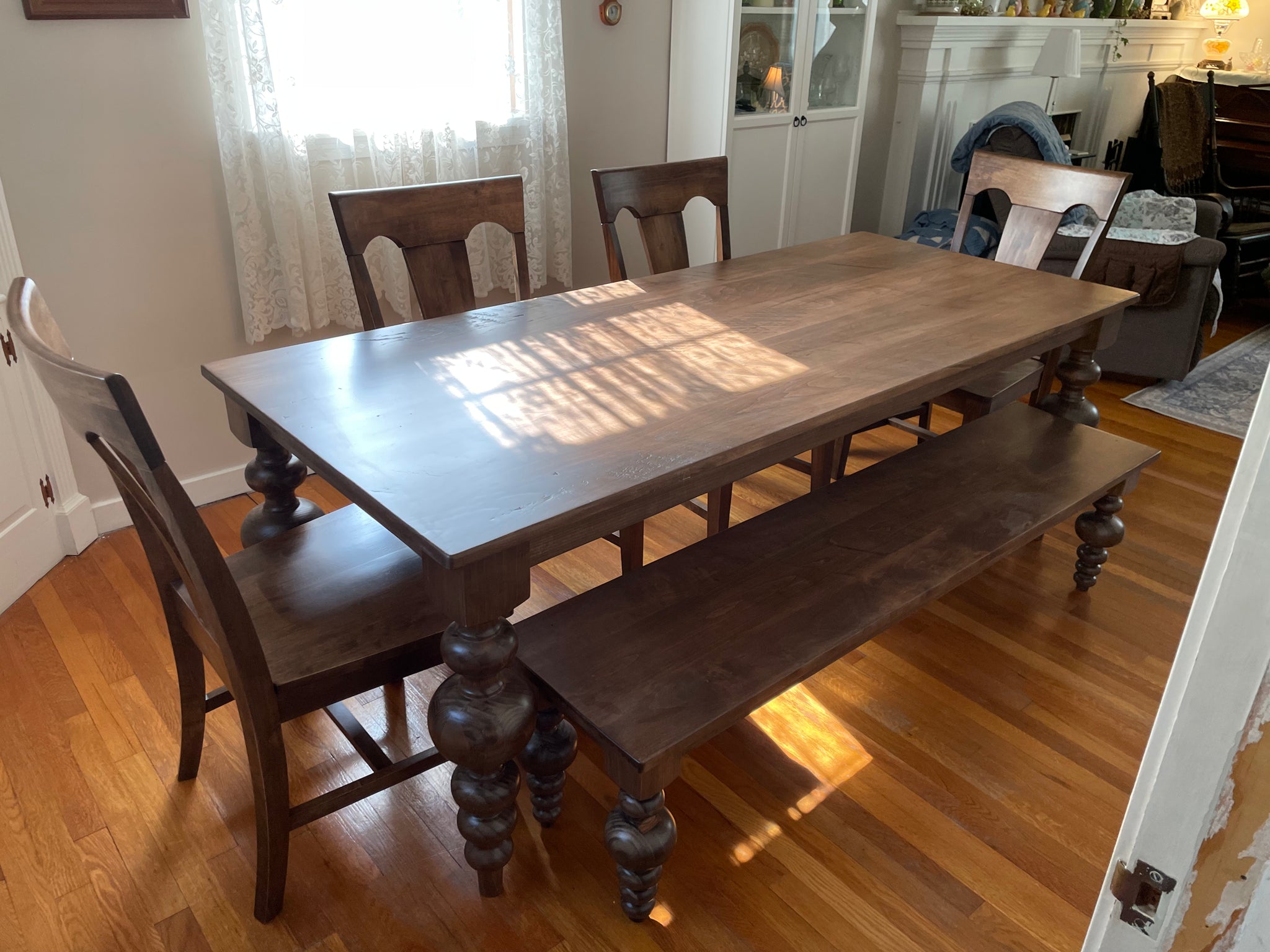Simple Steps to Replacing Old Dining Room Table Legs with New Ones
Simple Steps to Replacing Old Dining Room Table Legs with New Ones
Blog Article
From Standard to Modern: Discover the Ideal Eating Area Table Legs for Your Design
While traditional styles such as cabriole and transformed legs stimulate a feeling of ageless refinement, contemporary styles like barrette and geometric alternatives present a chance for striking visual rate of interest. As you think about these aspects, the inquiry stays: how can you seamlessly incorporate these diverse leg designs to produce a harmonious dining experience?
Understanding Table Leg Styles
The variety of dining-room table leg designs can significantly affect both the aesthetic appeals and capability of the space. Each leg style adds special sensible attributes and visual elements, accommodating diverse design choices and usage demands. Comprehending these designs is crucial for picking the best table that aligns with your overall interior decoration vision.
For circumstances, conical legs offer a clean, timeless look that can improve a space's beauty, while pedestal bases provide stability and optimize legroom, making them suitable for smaller areas. Hairpin legs, a hallmark of mid-century modern layout, introduce an industrial style, enabling an airy, open feeling. Trestle legs evoke rustic beauty, providing robust support and a sense of timelessness.
Wooden legs can bring heat and texture, whereas metal alternatives typically share a streamlined, contemporary vibe. Inevitably, comprehending table leg designs is vital for creating a cohesive eating area that shows individual design while guaranteeing usefulness and convenience.
Conventional Table Leg Options
When picking dining-room table legs, traditional choices typically symbolize timeless elegance and craftsmanship. These layouts mirror a rich heritage and a commitment to top quality, making them excellent for those who value timeless aesthetics.
Among one of the most famous standard leg styles is the cabriole leg, characterized by its stylish curved form. This design often features ornamental makings and is most commonly found in Queen Anne and Chippendale furnishings. One more prominent option is the turned leg, which boasts a collection of smooth, rounded shapes that provide a traditional appearance while preserving security.
Additionally, the straight leg, while easy, uses a strong and unadorned framework that can blend effortlessly with a selection of tabletop styles. For those drawn to ornate outlining, claw-and-ball feet legs stimulate a feeling of splendour and can function as a spectacular prime focus in any kind of dining space.
Lastly, stand bases, although not purely legs, give a different typical option that permits for adequate legroom and can be beautifully carved. Each of these traditional leg designs adds to the overall atmosphere of a dining-room, marrying function with visual appeal.

Modern Table Leg Designs
Modern table leg styles offer a diverse series of designs that stress innovative products and tidy lines. These layouts frequently prioritize functionality while serving as striking prime focus within a dining area. Minimal aesthetic appeals are widespread, with legs crafted from products such as steel, glass, and crafted wood, which add to a modern and airy feeling.
One prominent layout is published here the barrette leg, characterized by its slender, tapered structure that provides security without overwhelming the table top (dining room table legs). This style is typically located in mid-century modern furnishings and can easily match different table shapes. Another trend is using geometric forms, where legs might tackle angular or asymmetrical kinds, including aesthetic passion and a touch of artistry

Mixing Styles for Special Rooms
Commonly, property owners seek to develop one-of-a-kind dining areas that show their individual design by mixing numerous layout elements. This technique permits the incorporation of varied aesthetic appeals, causing a harmonious yet unique environment. As an example, matching a rustic wooden table with smooth, modern metal go to these guys legs can develop a distinctive comparison that elevates the room's general allure.
Additionally, integrating vintage table legs with contemporary tabletops can evoke a sense of history while preserving a modern perceptiveness. Such combinations not just display specific taste yet likewise encourage creativity, allowing property owners to curate a room that really feels both individual and inviting.
Color plays a crucial function in this blending process; selecting table legs that match or contrast with the existing color pattern can improve visual rate of interest. Whitewashed legs can soften the daring of a dark table surface area, creating a balanced visual.
Tips for Picking the Right Legs
Choosing the right table legs is important for achieving both performance and aesthetic allure in your eating space. Begin by taking into consideration the total style of your space. Traditional settings take advantage of legs that feature elaborate makings or transformed designs, while contemporary areas might call for streamlined, minimalist designs.
Following, analyze the elevation and stability of the legs. dining room table legs. Conventional eating tables range between 28 to 30 inches in height, so guarantee the legs enhance this dimension for comfort. Furthermore, robust materials, such as wood or steel, can boost stability and durability
Assess the leg form also-- options include right, tapered, or pedestal layouts. Straight legs offer a classic appearance, while tapered legs can include a touch of beauty. Pedestal bases give ample legroom and are ideal for smaller spaces.
Final Thought
In summary, picking the excellent eating room table legs requires cautious factor to consider of both modern and traditional styles. By integrating leg style, elevation, and product with the total decoration, a natural and inviting atmosphere can be achieved.
The range of eating room table leg styles can dramatically influence both the aesthetic appeals and capability of the room. Ultimately, comprehending table leg styles is important for producing a natural eating location that reflects personal style while making sure usefulness and convenience.One of the most famous traditional leg styles is the cabriole leg, characterized by its graceful curved shape. Straight legs provide a traditional appearance, while conical legs can add a touch of sophistication.In summary, choosing the ideal dining area table legs needs careful consideration of both conventional and modern-day designs.
Report this page